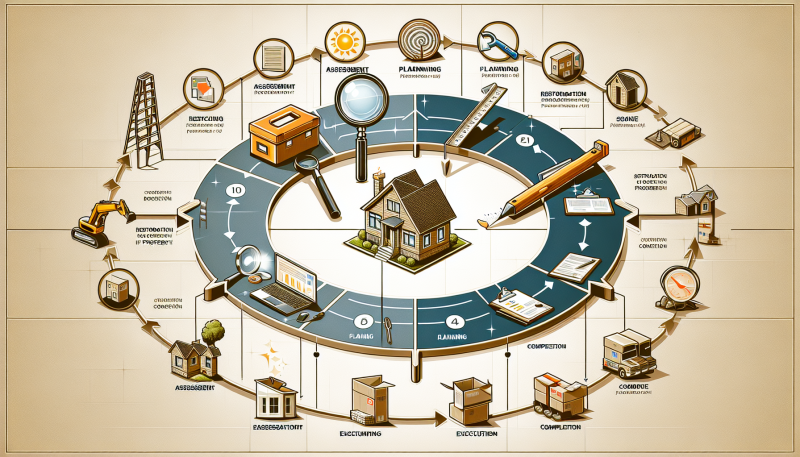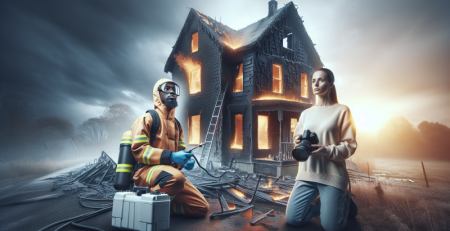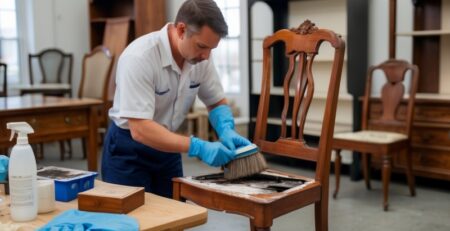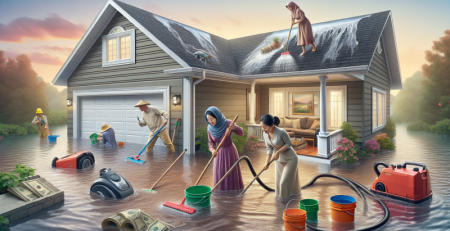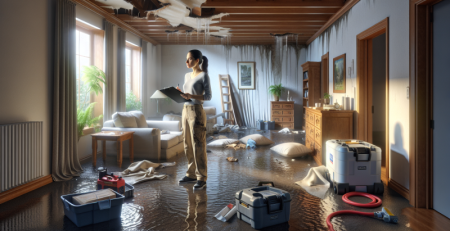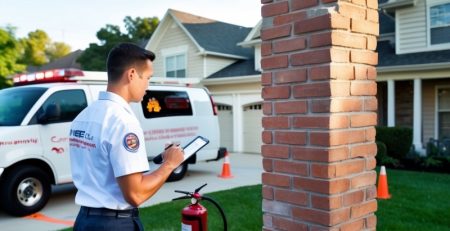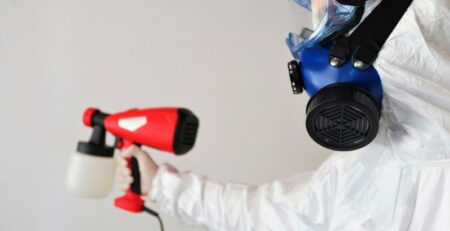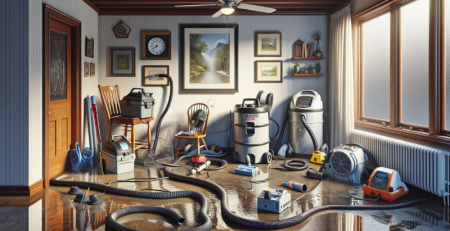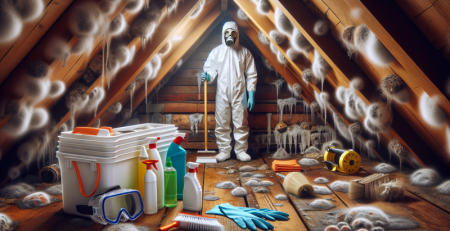Understanding the Restoration Process Timeline
When disaster strikes, understanding the restoration process timeline is crucial for homeowners and business owners alike. Whether you’re dealing with water damage, mold growth, or fire damage, knowing what to expect can help alleviate stress and ensure a smoother recovery. At Kraus Restoration, NJ’s leaders in restoration services, we specialize in providing comprehensive solutions for all types of damage. Our IICRC certified experts are available 24/7, ensuring a rapid response to your emergency needs. Serving Central and Northern NJ, we are committed to guiding you through every step of the restoration process, from initial assessment to final repairs. In this blog, we will break down the key phases of the restoration timeline, helping you understand what to anticipate and how to prepare for a successful restoration experience. For immediate assistance, don’t hesitate to call us at (973) 886-2021.
Overview of the Restoration Process
The restoration process is a critical sequence of steps designed to return a property to its pre-damage condition following incidents such as water damage, fire, or mold infestation. Understanding this process is essential for homeowners and business owners alike, as it can significantly impact the recovery timeline and overall outcome. The restoration process typically begins with an initial assessment, where professionals evaluate the extent of the damage and determine the necessary actions. This assessment is crucial, as it sets the stage for the entire restoration effort.
Once the assessment is complete, the next step involves securing the property. This may include boarding up windows, tarping roofs, or implementing other measures to prevent further damage from external elements. For instance, if water damage is present, immediate water extraction is vital to mitigate the risk of mold growth and structural deterioration. According to the Environmental Protection Agency, mold can begin to grow within 24 to 48 hours after water exposure, making swift action essential.
Following the initial mitigation efforts, the restoration team will move into the cleanup phase. This stage often involves removing damaged materials, such as drywall, flooring, and insulation. It is important to note that not all materials can be salvaged, and professionals must make informed decisions about what can be restored versus what needs to be replaced. This phase is critical for ensuring that the property is safe and free from contaminants.
After cleanup, the restoration process transitions into the repair and reconstruction phase. This is where the property begins to take shape again, with repairs being made to walls, ceilings, and floors. Depending on the extent of the damage, this phase can vary significantly in duration and complexity. For example, a minor water damage incident may only require patching and painting, while a severe fire damage situation could necessitate extensive rebuilding efforts.
Throughout the restoration process, communication with the property owner is vital. Regular updates and consultations ensure that the owner is informed about the progress and any potential changes in the timeline or scope of work. This transparency helps to manage expectations and fosters a collaborative environment between the restoration team and the property owner.
In addition to the physical restoration of the property, it is also essential to address any emotional and psychological impacts that may arise from experiencing significant damage. Homeowners and business owners often face stress and uncertainty during this time, and providing support and resources can be beneficial. Restoration professionals should be prepared to offer guidance and reassurance throughout the process.
To summarize, the restoration process is a multi-step endeavor that requires careful planning, execution, and communication. Key phases include assessment, securing the property, cleanup, and repair. Each phase plays a crucial role in ensuring that the property is restored effectively and efficiently. As a homeowner or business owner, understanding this process can help you navigate the challenges of property damage and work collaboratively with restoration professionals.
For more information on specific restoration services, you can explore our services page, or if you have questions, feel free to contact us. Additionally, our projects showcase various successful restorations that highlight our expertise in the field.
In conclusion, being informed about the restoration process can empower property owners to make better decisions and ensure a smoother recovery journey. Remember, timely action and professional assistance are key to restoring your property to its former glory.
Initial Assessment and Damage Evaluation
The initial assessment and damage evaluation are critical steps in the restoration process timeline, serving as the foundation for effective recovery and restoration efforts. When a property suffers damage due to water, fire, or mold, the first response should be a thorough evaluation of the extent and nature of the damage. This assessment involves a detailed inspection of the affected areas, identifying not only visible damage but also hidden issues that may not be immediately apparent. For instance, in the case of water damage, it is essential to check for moisture levels in walls, floors, and ceilings, as well as to assess the potential for mold growth, which can begin within 24 to 48 hours after water exposure.
During this phase, restoration professionals will utilize specialized equipment such as moisture meters and thermal imaging cameras to detect hidden water and assess structural integrity. This comprehensive evaluation allows for the development of a tailored restoration plan that addresses all aspects of the damage. It is also crucial for determining the necessary resources, including labor, materials, and time, required for the restoration process.
Furthermore, the initial assessment serves as a communication tool between the restoration team and the property owner. Clear documentation of the damage, including photographs and detailed descriptions, can help in discussions with insurance companies and ensure that all parties are on the same page regarding the extent of the damage and the proposed restoration plan. This transparency is vital for a smooth claims process and can significantly impact the speed and efficiency of the restoration timeline.
In addition to assessing physical damage, professionals will also evaluate the safety of the environment. This includes checking for hazardous materials, structural risks, and ensuring that the space is safe for occupants and workers alike. For example, in fire damage scenarios, the assessment will include evaluating smoke damage and the potential for toxic fumes, while in cases of mold damage, it will involve assessing air quality and the presence of harmful spores.
Once the assessment is complete, the restoration team will prioritize the necessary steps to mitigate further damage and begin the restoration process. This may involve immediate actions such as water extraction, boarding up windows, or setting up containment for mold remediation. The initial assessment and damage evaluation not only set the stage for effective restoration but also provide peace of mind to property owners, knowing that their property is in capable hands.
Understanding the importance of this phase in the restoration process timeline can help property owners appreciate the complexity and thoroughness required to restore their homes or businesses to pre-damage conditions. By recognizing the significance of a detailed initial assessment, property owners can make informed decisions and engage with restoration professionals who prioritize comprehensive evaluations as part of their services. This proactive approach can ultimately lead to a more efficient restoration process and a quicker return to normalcy. For those facing the aftermath of water, fire, or mold damage, reaching out to experienced restoration experts is crucial. For more information on how to navigate the restoration process, visit our about page or contact us directly to discuss your specific needs.
Developing a Restoration Plan
Creating a comprehensive restoration plan is a crucial step in the restoration process timeline, ensuring that all aspects of recovery are addressed efficiently and effectively. This plan serves as a roadmap for restoring a property after damage from events such as water intrusion, fire, or mold infestation. The first step in developing this plan involves a thorough assessment of the damage. Professionals will conduct a detailed inspection to identify the extent of the destruction, which includes evaluating structural integrity, identifying hazardous materials, and determining the necessary cleanup and repair measures. This assessment is vital as it informs the scope of work and helps prioritize tasks based on urgency and severity.
Once the assessment is complete, the next phase is to outline the specific restoration goals. These goals should be realistic and achievable, taking into account the resources available and the timeline for completion. For instance, if the damage is due to water, the plan may include immediate water extraction, drying out affected areas, and preventing future moisture issues. In cases of fire damage, the plan might focus on soot removal, smoke odor elimination, and structural repairs. Each goal should be accompanied by a timeline that outlines when each task will be initiated and completed, ensuring that the restoration process remains on track.
Budgeting is another critical component of the restoration plan. It is essential to estimate the costs associated with each phase of the restoration process, from initial cleanup to final repairs. This budget should include labor, materials, and any necessary permits or inspections. By having a clear financial plan, property owners can avoid unexpected expenses and ensure that the restoration project is financially viable. Additionally, it is advisable to consult with insurance providers to understand coverage options and potential reimbursements, which can significantly impact the overall budget.
Communication is key throughout the restoration process. The plan should outline how updates will be communicated to all stakeholders, including property owners, contractors, and insurance representatives. Regular updates help keep everyone informed about progress, challenges, and any changes to the timeline or budget. This transparency fosters trust and collaboration, which are essential for a successful restoration project.
Incorporating safety measures into the restoration plan is also vital. Depending on the type of damage, there may be health risks associated with mold, smoke, or structural instability. The plan should include protocols for ensuring the safety of workers and occupants during the restoration process. This may involve using personal protective equipment, ensuring proper ventilation, and adhering to local safety regulations.
Finally, the restoration plan should include a post-restoration evaluation phase. Once the restoration work is completed, it is important to assess the effectiveness of the restoration efforts. This evaluation can help identify any remaining issues that need to be addressed and provide insights for future restoration projects. It also allows property owners to ensure that their space is not only restored but also improved to prevent similar issues from arising in the future.
In summary, developing a restoration plan is a multifaceted process that requires careful consideration of damage assessment, goal setting, budgeting, communication, safety, and post-restoration evaluation. By following these steps, property owners can navigate the complexities of restoration more effectively, ensuring a smoother recovery process. For more information on how to create an effective restoration plan, you can explore our about page or check out our services to see how we can assist you in your restoration journey. If you have any questions or need assistance, feel free to contact us.
The Cleaning and Mitigation Phase
The cleaning and mitigation phase is a critical step in the restoration process timeline, especially following incidents such as water damage, fire damage, or mold infestations. This phase is essential for ensuring that the affected area is thoroughly cleaned, sanitized, and restored to a safe and habitable condition. The primary goal during this phase is to prevent further damage and to mitigate any health risks associated with contaminants or hazardous materials that may have been introduced during the incident.
When a property suffers from water damage, for instance, the first step in the cleaning and mitigation phase involves assessing the extent of the damage. Professionals will conduct a comprehensive inspection to identify the source of the water intrusion and the areas affected. This assessment is crucial as it informs the subsequent steps in the restoration process. Once the assessment is complete, the next step is to remove any standing water. This is typically done using specialized equipment such as pumps and vacuums designed for water cleanup. The quicker this step is completed, the less likely it is that secondary damage, such as mold growth, will occur.
Following the removal of water, the focus shifts to drying and dehumidifying the affected areas. This is achieved through the use of industrial-grade fans and dehumidifiers that help to extract moisture from the air and surfaces. Proper drying is vital because lingering moisture can lead to mold growth and structural damage. In cases of mold contamination, the cleaning and mitigation phase will also involve the safe removal of mold-infested materials and thorough cleaning of surfaces to prevent spores from spreading. For more information on how mold is handled during this phase, you can visit our mold cleanup services.
In addition to water and mold, fire damage presents its own unique challenges during the cleaning and mitigation phase. Smoke and soot can permeate walls, ceilings, and furnishings, requiring specialized cleaning techniques to restore the property. Professionals will often use a combination of dry cleaning, wet cleaning, and abrasive cleaning methods to effectively remove soot and smoke residues. Odor removal is also a significant part of this phase, as lingering smells can be a persistent issue after a fire. For those interested in understanding how fire damage is addressed, our fire cleanup services provide detailed insights into the techniques used.
Throughout the cleaning and mitigation phase, safety is paramount. Restoration professionals are trained to handle hazardous materials and to use personal protective equipment to safeguard their health. They also follow strict protocols to ensure that the cleaning process does not inadvertently spread contaminants to unaffected areas of the property. This meticulous approach not only protects the health of the restoration team but also ensures that the property is safe for occupants once the restoration is complete.
Once the cleaning and mitigation phase is finished, the property will be ready for the next steps in the restoration process, which may include repairs, reconstruction, and final touches to bring the space back to its pre-incident condition. This phase is essential for laying the groundwork for a successful restoration, as it addresses immediate concerns and prepares the environment for further restoration efforts.
In conclusion, the cleaning and mitigation phase is a vital component of the restoration process timeline. It involves thorough assessment, removal of contaminants, drying, and cleaning to ensure that the property is safe and habitable. By understanding the importance of this phase, property owners can appreciate the complexities involved in restoring their homes or businesses after a disaster. For more information on our comprehensive restoration services, please visit our services page or reach out through our contact page for personalized assistance.
Restoration and Repair Work
Restoration and repair work is a crucial aspect of the overall restoration process, particularly after events such as water damage, fire incidents, or mold infestations. Understanding the intricacies of this work can help property owners navigate the often overwhelming aftermath of such disasters. The restoration process begins with an assessment of the damage, which is essential for determining the extent of repairs needed. This initial evaluation involves a thorough inspection of the affected areas, identifying not only visible damage but also hidden issues that may not be immediately apparent. For instance, in the case of water damage, professionals will look for signs of structural compromise, mold growth, and the integrity of electrical systems.
Once the assessment is complete, the next step is to develop a comprehensive restoration plan. This plan outlines the specific repairs required, the materials needed, and the timeline for completion. Effective communication between the restoration team and the property owner is vital at this stage to ensure that all parties are aligned on expectations and outcomes. The restoration process often involves multiple stages, including cleanup, drying, and repair. For water damage, the cleanup phase may include the removal of standing water and the drying of affected materials. In cases of fire damage, this phase might involve the removal of charred materials and soot cleanup.
After the cleanup, the drying process is critical to prevent further damage, particularly mold growth. This phase may require specialized equipment such as dehumidifiers and air movers to ensure that all moisture is removed from the environment. Once the area is thoroughly dried, the repair work can commence. This may involve replacing drywall, flooring, or other structural components that were damaged. Skilled technicians will also address any cosmetic repairs, such as painting and finishing, to restore the property to its pre-damage condition.
Throughout the restoration and repair work, it is essential to adhere to safety standards and regulations. Professionals in the field are trained to handle hazardous materials and ensure that the work environment is safe for both workers and occupants. This adherence to safety protocols not only protects the individuals involved but also ensures that the restoration work meets industry standards.
The timeline for restoration and repair work can vary significantly based on the extent of the damage and the type of restoration required. Minor repairs may be completed within a few days, while extensive damage could take weeks or even months to fully restore. Property owners should be prepared for this variability and maintain open lines of communication with their restoration team. Regular updates on progress can help alleviate concerns and provide a clearer picture of when the property will be fully restored.
In addition to the physical repairs, restoration work often includes addressing any underlying issues that may have contributed to the damage. For example, if mold was present due to water intrusion, it is crucial to identify and rectify the source of the water to prevent future occurrences. This holistic approach not only restores the property but also enhances its resilience against future damage.
Ultimately, the goal of restoration and repair work is to return the property to a safe and functional state while minimizing disruption to the occupants. By understanding the restoration process timeline and the specific steps involved in restoration and repair work, property owners can make informed decisions and work effectively with restoration professionals. For more information on the services offered, including water cleanup and mold cleanup, visit our services page. If you have specific questions or need assistance, do not hesitate to contact us for expert guidance.
Final Inspection and Quality Assurance
The final inspection and quality assurance phase is a critical component of the restoration process timeline, ensuring that every aspect of the project meets the highest standards of quality and safety. This stage occurs after the restoration work has been completed, and it serves as a comprehensive evaluation of the entire project. The primary goal is to confirm that all restoration efforts have been executed correctly and that the property is safe for occupancy.
During the final inspection, a qualified restoration professional will thoroughly assess the work done, checking for any signs of incomplete tasks or potential issues that could arise in the future. This includes examining structural integrity, verifying that all materials used are up to code, and ensuring that the aesthetic aspects of the restoration align with the client’s expectations. The inspector will also look for any lingering odors, moisture issues, or signs of mold growth that could compromise the health and safety of the occupants.
Quality assurance is not just about checking off a list of tasks; it is about ensuring that the restoration meets industry standards and adheres to best practices. This phase often involves multiple stakeholders, including project managers, restoration technicians, and sometimes even third-party inspectors who provide an unbiased evaluation of the work completed. Their insights can be invaluable in identifying areas that may need further attention or improvement.
In addition to visual inspections, this phase may also include testing for air quality, moisture levels, and other environmental factors that could affect the safety of the space. For instance, if the restoration involved water damage, it is crucial to ensure that all affected areas are completely dry and free from mold. This is where specialized services, such as water cleanup, come into play, as they focus on preventing future issues related to moisture and mold growth.
Once the inspection is complete, the findings will be documented in a detailed report. This report serves as a record of the restoration process and can be essential for insurance claims or future property evaluations. If any deficiencies are identified, the restoration team will address these issues promptly, ensuring that the property is restored to its original condition or better. This commitment to quality is what sets professional restoration companies apart and gives clients peace of mind knowing that their property is in safe hands.
Moreover, the final inspection and quality assurance phase also provides an opportunity for the client to review the work done. Open communication between the restoration team and the client is vital during this stage. Clients are encouraged to ask questions and express any concerns they may have. This collaborative approach not only fosters trust but also ensures that the client’s vision for their property is realized.
In conclusion, the final inspection and quality assurance phase is an indispensable part of the restoration process timeline. It guarantees that all work is completed to the highest standards, ensuring the safety and satisfaction of the property owner. By prioritizing this phase, restoration companies demonstrate their commitment to excellence and customer service. For those interested in learning more about the restoration process or seeking professional assistance, visiting the about page or exploring the various services offered can provide valuable insights. Additionally, for any inquiries or to discuss specific restoration needs, the contact page is readily available for assistance.
Post-Restoration Follow-Up and Maintenance
After the restoration process is complete, it is crucial to engage in a thorough follow-up and maintenance plan to ensure the longevity and effectiveness of the restoration efforts. This phase is often overlooked but is essential for safeguarding your property against future issues. The follow-up process typically begins with a detailed inspection of the restored areas to assess the quality of the work and identify any potential problems that may have arisen post-restoration. This inspection should be conducted by professionals who understand the nuances of restoration and can provide an expert evaluation.
One of the primary aspects of post-restoration maintenance is monitoring for signs of moisture or water damage, especially in areas that have undergone water cleanup. Even after restoration, it is vital to keep an eye on humidity levels and ensure that there are no leaks or sources of water intrusion. Regular checks can help catch any issues early, preventing further damage and costly repairs down the line. Homeowners should consider investing in moisture detection systems or dehumidifiers to maintain optimal conditions in their properties.
Another critical component of post-restoration maintenance is addressing any potential mold growth. Mold can develop quickly in damp environments, and even after a thorough mold cleanup, it is essential to remain vigilant. Regular inspections and cleaning of areas prone to moisture can help mitigate the risk of mold returning. Homeowners should also educate themselves about the signs of mold growth and the conditions that promote it, ensuring they can act swiftly if they notice any issues.
In addition to monitoring for moisture and mold, routine maintenance of the restored areas is necessary. This includes cleaning and caring for surfaces that have been restored, as well as ensuring that any new installations, such as flooring or cabinetry, are properly maintained. Regular cleaning not only keeps the space looking its best but also helps to preserve the integrity of the materials used during the restoration process.
Furthermore, it is advisable to establish a relationship with a restoration service provider for ongoing support. Many companies offer maintenance plans that include regular inspections and preventative measures to keep your property in top condition. Engaging with professionals who specialize in restoration can provide peace of mind, knowing that your property is being monitored by experts who can quickly address any emerging issues.
Homeowners should also consider documenting the restoration process and any maintenance activities. Keeping a detailed record can be beneficial for future reference, especially if any issues arise later on. This documentation can also be useful for insurance purposes, as it provides evidence of the work completed and the ongoing maintenance performed.
In summary, the post-restoration follow-up and maintenance phase is a vital part of the restoration process timeline. By conducting thorough inspections, monitoring for moisture and mold, maintaining restored areas, and engaging with professional services, homeowners can ensure that their properties remain safe and sound. For more information on the restoration services available, including water cleanup and mold cleanup, visit our services page. If you have any questions or need assistance, feel free to contact us for expert guidance.
In conclusion, understanding the restoration process timeline is crucial for anyone facing the aftermath of damage to their property, whether from natural disasters, water leaks, or fire incidents. By familiarizing yourself with the various stages—from the initial assessment and mitigation to the final repairs and restoration—you can better navigate the complexities of recovery. This knowledge not only helps set realistic expectations but also empowers you to communicate effectively with restoration professionals, ensuring a smoother and more efficient process. Remember, while the timeline may vary depending on the extent of the damage and the specific circumstances, being informed can significantly reduce stress and uncertainty during a challenging time. Ultimately, patience and proactive engagement are key to restoring your space and moving forward with confidence.
